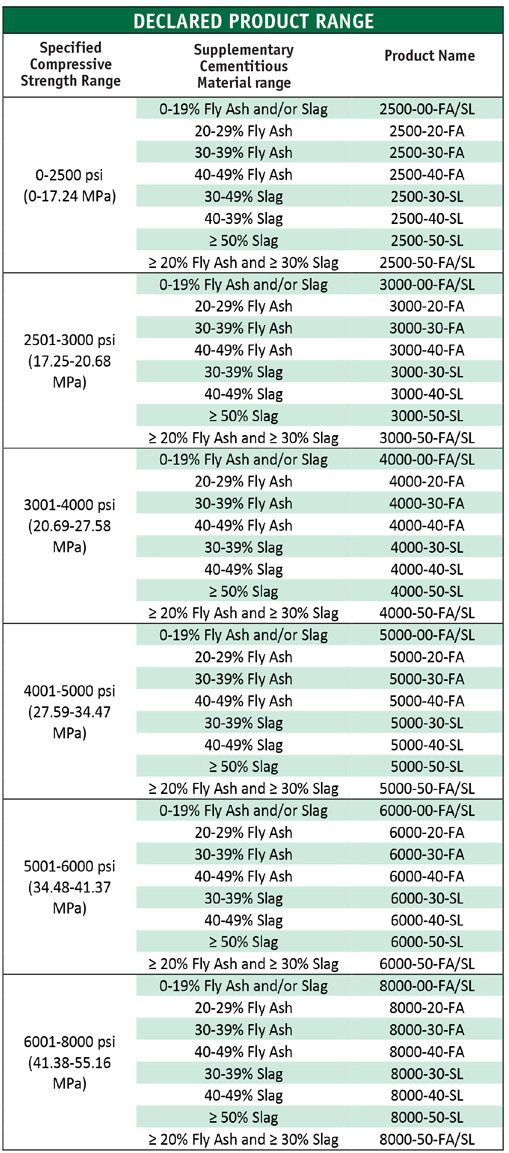
Data behind a new National Ready Mixed Concrete Association life cycle assessment report for cast-in-place concrete shows how ready mixed producers, through more efficient use of portland cement, have cut the respective carbon footprints of 4,000- and 8,000-psi orders by 13 percent and 20 percent since 2014. Armed with results from a survey of 155 member producers operating 1,954 ready mixed plants, the association analyzed data on material throughput and other metrics reflecting net energy consumption in slabs or structures.
“This represents a significant step towards meeting our carbon reduction goal,” says NRMCA Executive Vice President for Structures and Sustainability Lionel Lemay. “Members established sustainability goals to reduce environmental impact early on and are truly leading by example in this very important industry-wide initiative.”
The American Institute of Architects-aligned Architecture 2030 initiative announced the Challenge for Products in 2011, setting a goal for building or construction materials interests to halve their carbon footprint over a two-decade period. NRMCA became one of the first industry groups to adopt the 2030 Challenge in 2012 and, following Architecture 2030 protocol, published its carbon footprint benchmarks in 2014.
Cement optimization underlying the footprint reduction noted in the 2019 benchmark follow up report parallels NRMCA’s promotion of performance-based versus prescriptive specifications for public or private building and nonbuilding construction. Prescriptive specifications tend to drive up carbon intensity by setting minimum cement contents, along with water-cement ratios below thresholds necessary to attain targeted concrete performance.
The latest carbon footprint figures represent averages across the entire industry. However, many NRMCA members are demonstrating even lower footprints by publishing Product Specific Environmental Product Declarations. For some applications or projects, producers are incorporating supplementary cementitious materials, low-carbon cements or carbon capture methods for even sharper footprint reduction.
“NRMCA’s commitment to establishing industry baselines and product reporting has accelerated movement toward meeting the 2030 Challenge,” affirms President Michael Philipps. “This is inspiring innovations that hold incredible promise for reducing concrete’s carbon footprint by more than 50 percent today. One growing technology, carbon capture, can even create a net negative carbon footprint in concrete.”